Welcome to our expert guide on garden planting, where you can master the art of creating a thriving and beautiful garden oasis right in your own backyard. Our guide offers a comprehensive and personal approach to gardening, sharing practical tips and techniques for successful garden planting. Whether you’re a beginner or an experienced gardener, our expert guide has something for you.
Our guide goes beyond the basics of garden planting and covers topics like soil fertility, cultural practices, and choosing the best plants for your garden. We even include advice that’s usually reserved for commercial farmers and nurseries. But perhaps most importantly, our guide emphasizes the joy and satisfaction that comes from growing your own produce and encourages readers to experiment with rare and unusual varieties.
Key Takeaways:
- Our expert guide on garden planting offers a comprehensive and personal approach to gardening.
- We cover practical tips and techniques for successful garden planting, including advice usually reserved for commercial farmers and nurseries.
- Our guide emphasizes the joy and satisfaction that comes from growing your own produce and encourages readers to experiment with rare and unusual varieties.
Uncover Tips and Tricks for Successful Garden Planting
In this section, I will share with you a range of tips and tricks to ensure your garden planting ventures yield abundant and vibrant results. One essential tip is to choose the right location for your garden. Look for a spot that gets a minimum of six hours of sunlight each day, has well-draining soil, and is sheltered from strong winds.
Another important factor to consider is the soil. Test it for pH and nutrient levels and amend it as needed. Adding organic matter such as compost, manure, or leaves can improve soil structure and fertility.
When planning your garden, consider companion planting. Certain plant combinations can benefit each other by deterring pests, improving soil health, and promoting growth. For example, planting basil alongside tomatoes can improve tomato flavor and repel pests.
Timing is also crucial. You want to plant crops at the appropriate time for your particular region. This will maximize your chances of success and ensure that your plants have the best chance of thriving. A comprehensive guide like “Mastering the Art of Vegetable Gardening” can offer valuable advice on ideal planting times for specific crops.
Watering your garden properly is another essential aspect of successful garden planting. Plants need consistent, deep watering to produce healthy foliage and fruit. For best results, water in the early morning or late afternoon to reduce water loss due to evaporation.
Finally, don’t forget to monitor your garden for pests and diseases. Early detection is key to preventing the spread of pests and diseases and can save you time and money in the long run. Look for signs of damage, such as holes in leaves or discoloration, and take action promptly.
By following these garden planting tips and techniques, you can increase your chances of success and create a beautiful and productive garden. With a little bit of knowledge and effort, anyone can become a successful gardener!
Choosing the Best Plants for Your Garden Planting
When it comes to garden planting, selecting the right plants is key to a thriving and visually appealing garden. The best plants for your garden will depend on a variety of factors, including your experience as a gardener, personal preferences, and the specific needs of each plant.
The author of a book about vegetable gardening emphasizes the importance of choosing plants that you are passionate about. This not only ensures a more enjoyable gardening experience but also increases the likelihood of success. The book provides insights into the varieties that the author believes are the best to raise from seed, based on his personal experience and experimentation.
Another gardening book focuses on the beauty of vegetable gardening and encourages creativity in plant selection. It features over 200 different varieties of fruits, vegetables, herbs, and leafy greens, offering tips and advice on how to grow them successfully.
| Plant Type | Best Growing Conditions | Benefits |
|---|---|---|
| Tomatoes | Full sun, moist soil, support for vines | High in nutrients, versatile in cooking |
| Peppers | Full sun, well-draining soil, protection from wind | Vibrant colors and flavors, high in Vitamin C |
| Carrots | Loose, well-draining soil, consistent moisture | High in antioxidants, versatile in cooking, easy to grow |
When selecting plants for your garden, it is important to consider the specific growing conditions of your area, such as climate, soil type, and available sunlight. It is also helpful to research the specific needs of each plant, including watering, fertilizing, and pruning requirements.
Overall, choosing the best plants for your garden planting involves a combination of personal preference, gardening experience, and plant-specific needs. Whether you are passionate about growing vegetables, herbs, or flowers, there are endless options to create a thriving and visually appealing garden.
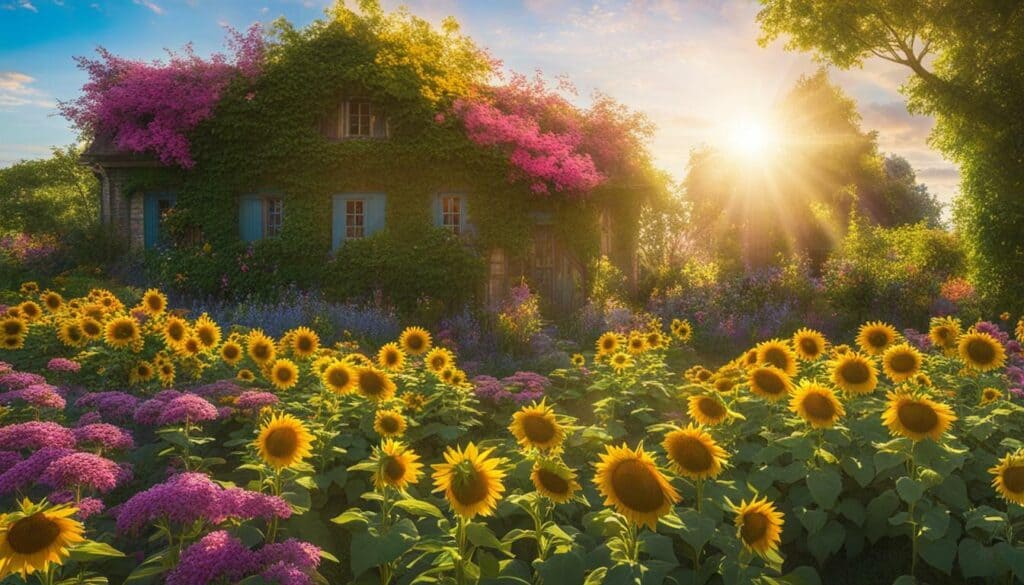
Exploring Garden Planting Ideas for Inspiration
Get ready to unleash your creativity as we explore a variety of garden planting ideas that will inspire you to transform your outdoor space into a lush sanctuary. Whether you’re an experienced gardener or a novice, there’s always room for fresh ideas to add new life to your garden. Here are some sources to help you get started:
Source 1: Deep Connection Between Vegetables and Kitchens
If you’re looking to create a connection between your garden and your kitchen, this source provides valuable insight. It emphasizes the personal satisfaction of growing and consuming home-grown produce, and offers advice on cultural practices and soil fertility for each crop. The source explores both organic and inorganic methods of gardening, allowing you to choose which approach suits you best. With this holistic approach to gardening, you’ll create an authentic and meaningful relationship with your garden.
Source 2: Unusual Options and Plant Lore
If you’re looking to go beyond traditional gardening practices, this source highlights a fascinating gardening book. It offers rare vegetable varieties, unusual options, and plant lore that encourage creativity and treating the vegetable garden as a private fantasy supermarket. The book provides details on over 200 different varieties of fruits, vegetables, herbs, and leafy greens, with beautiful illustrations to inspire readers. Additionally, it includes specific growing tips and techniques for various vegetables, making it a comprehensive guide for any gardener looking to explore new and exciting options.
Source 3: Beautiful Garden Designs and Layouts
Another source focuses on providing inspiration through beautiful garden designs and layouts. Whether you’re looking to create a serene and tranquil garden or a bold and vibrant one, this source has you covered. It offers a range of creative ideas to suit any taste, with stunning imagery to bring the designs to life. With this source, you’ll be able to turn your garden into a work of art.
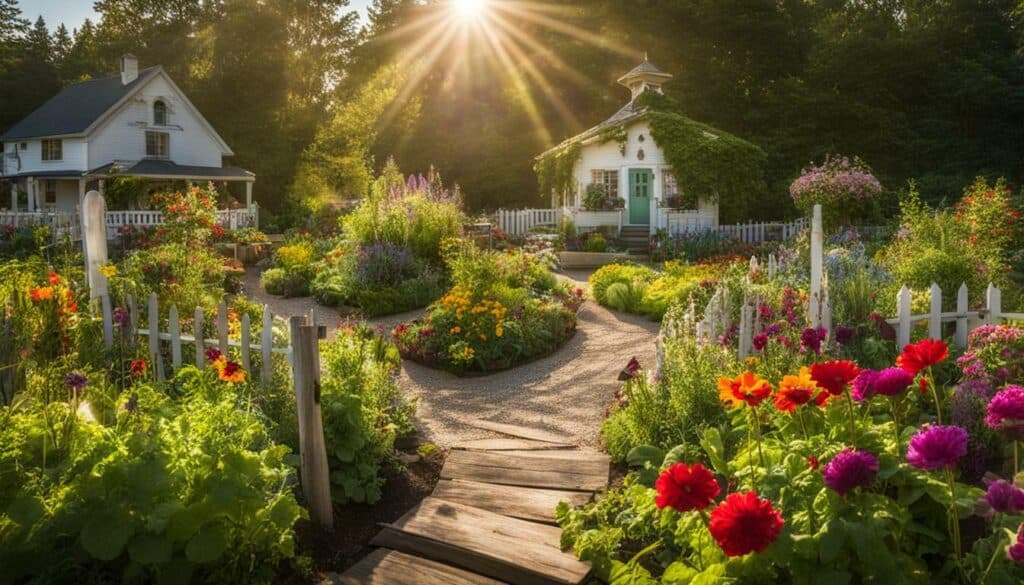
No matter which source speaks to you the most, exploring garden planting ideas is a great way to enrich your gardening experience. With a little creativity and inspiration, you’ll be able to transform your garden into a space that reflects your personality and brings joy to your life.
The Luxury of Home-Grown Produce Through Garden Planting
There is a unique luxury in being able to walk out to your garden and pick home-grown produce that is bursting with flavor and nutrients. Garden planting allows you to connect with nature and enjoy fresh, healthy food without leaving your home. Growing vegetables in your garden is not only rewarding, but also a valuable skill to have.
Home-grown produce is superior to store-bought varieties in terms of flavor and nutritional value. It is also free from harmful pesticides and chemicals that are often used in commercial farming. Garden planting enables you to have complete control over what goes into your food, giving you peace of mind and helping you make healthy choices for yourself and your family.
Growing your own vegetables can be a fun and creative experience. With endless possibilities, you can create your own unique fantasy supermarket, picking and choosing from over 200 varieties of fruits, vegetables, herbs, and leafy greens. Whether you prefer traditional favorites or rare heirlooms, garden planting allows you to grow what you love and experiment with new flavors.

Another advantage of garden planting is that it can save you money in the long run. By growing your own produce, you can reduce your grocery bills and enjoy fresh food without having to pay premium prices. Garden planting also provides a sense of satisfaction and fulfillment that cannot be purchased in a store.
Moreover, garden planting is a great way to reduce your carbon footprint and contribute to a sustainable future. By growing your own food, you can reduce the need for long-distance transportation and packaging, which can help to lower greenhouse gas emissions and conserve natural resources.
In conclusion, garden planting is a rewarding and beneficial experience that anyone can enjoy. From the joy of watching your vegetables grow to the satisfaction of harvesting your own food, garden planting provides a range of physical, emotional, and environmental benefits. So, why not start your own garden today and experience the luxury of home-grown produce for yourself?
Cultural Practices and Advice for Successful Garden Planting
In this section, I will share with you the cultural practices and valuable advice typically reserved for commercial farmers and nurseries, so you can maximize the potential of your garden planting endeavors. Growing vegetables requires patience, skill, and much preparation. Therefore, it’s essential to understand the best cultural practices and expert advice to achieve a bountiful yield.
According to various sources, the first crucial tip to successful garden planting is to rotate your crops between beds every year. This process is vital to maintain soil fertility, reduce pests and diseases, and ensure a healthy yield.
Another critical consideration is the depth at which you plant your seeds. Generally, small seeds should be planted shallow, no more than twice the diameter of the seed, while larger seeds should be sown deeper. To succeed in the germination process, ensure that the soil remains moist at all times and at ideal temperatures; typically 70-75°F for most crops.
Additionally, it’s essential to evaluate the growth factors for each crop and consider factors like climate, soil type, and sunlight when deciding which plants to grow together.
Commercial farmers also employ a technique known as double-digging to loosen the soil and provide a better growing environment for roots. The technique involves loosening the soil to two spade depths, which allows for better root penetration and water retention.
For optimal plant growth, it’s also crucial to weed regularly and monitor for pests and diseases. This not only ensures healthy plant growth but also helps to prevent the spread of any diseases.
Lastly, it’s essential to enjoy the creative process of gardening and experiment with new techniques and plants. With inspiration from sources like the ones discussed, you can turn your garden into your own private fantasy supermarket, filled with a variety of fruits, vegetables, herbs, and leafy greens.
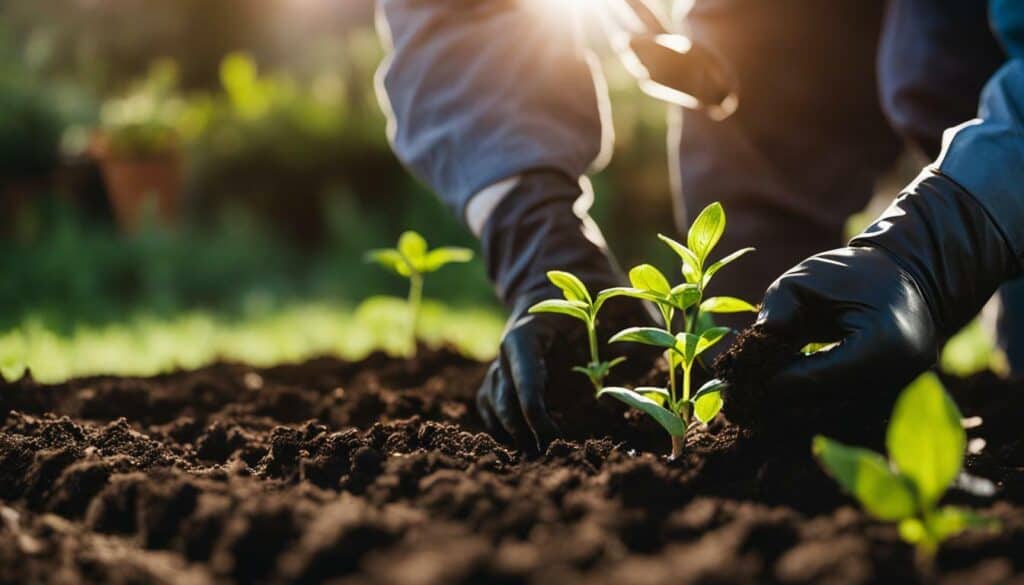
Understanding Soil Fertility for Successful Garden Planting
A key factor in successful garden planting is understanding and nurturing the fertility of your soil, as it provides the foundation for healthy and thriving plants. To achieve this, it is essential to learn about the different varieties of plants and their specific soil requirements. Gardening books and blogs offer valuable insights into the best varieties to grow from seed, as well as cultural practices and advice typically reserved for commercial farmers.
When it comes to improving soil fertility, both organic and inorganic methods offer benefits. Organic methods include adding compost, manure, and leaf mold to the soil, which enriches it with micronutrients and beneficial microorganisms. Inorganic methods include adding chemical fertilizers, which can provide a quick boost to soil fertility. However, it is important to note that overuse of chemical fertilizers can lead to imbalances in soil nutrients and harm the environment.
A crucial aspect of successful garden planting is understanding the specific needs of each plant. This includes starting seeds at the ideal temperature range, which can vary depending on the plant variety. Additionally, some plants require more acidic soil, while others prefer alkaline soil. Understanding these nuances can help gardeners create optimal growing conditions for their plants.
By deep-diving into the topic of soil fertility, gardeners can enhance their gardening experience and enjoy the luxuries of home-grown produce. With the right knowledge and care, any gardener can create a successful and fruitful garden.
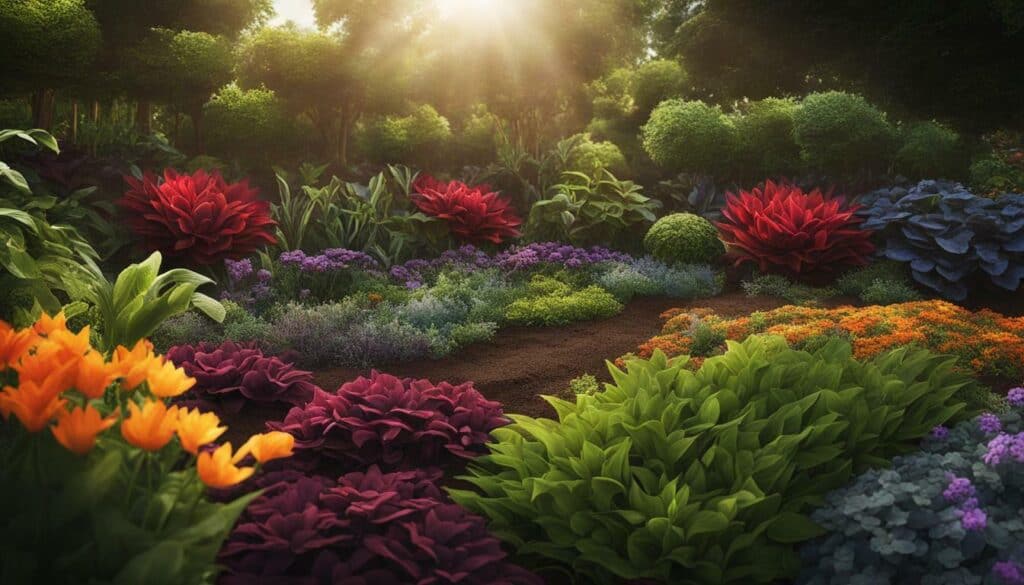
Germinating Seeds and Ideal Planting Times for Garden Planting
Properly germinating seeds and planting them at the right time are crucial steps in achieving a flourishing garden through garden planting. In his book “Mastering the Art of Vegetable Gardening,” Matt Mattus emphasizes the importance of germination and ideal planting times for successful vegetable gardening. Germination refers to the process of a seed developing into a plant, and it is essential to have a good understanding of it to achieve optimal results.
For germinating seeds, it is important to choose high-quality seeds, and to follow the instructions on the seed packet on how to plant them. Many seeds require specific conditions to germinate successfully, including the right temperature, moisture level, and light exposure. Some seeds need to be sowed directly in the garden, while others require starting indoors and transplanting later. Mattus provides detailed guidance on germination and planting requirements for over 200 different varieties of fruits, vegetables, and herbs in his book.
In addition to understanding germination, it is important to plant seeds and seedlings at the right time. Each vegetable crop has a specific temperature range and day length that it requires to grow optimally. Knowing when to plant seeds and seedlings can help ensure that they have the conditions they need to thrive and produce a bountiful harvest. Mattus also provides guidance on planting dates for different crops in different growing zones.
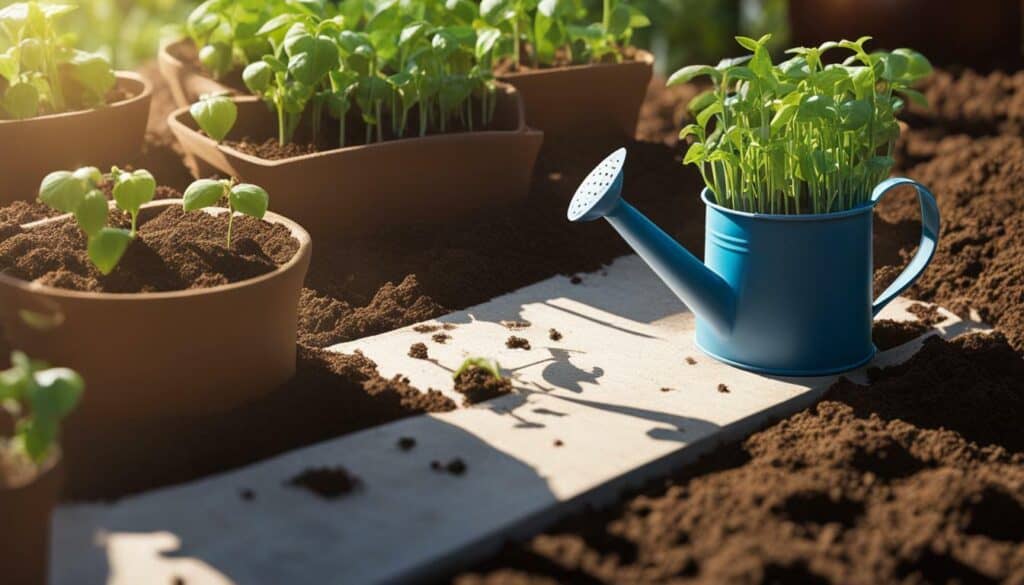
Overall, “Mastering the Art of Vegetable Gardening” is an excellent resource for gardeners looking to improve their skills and knowledge of germinating seeds and ideal planting times for garden planting. By following the expert guidance provided in the book, gardeners can achieve impressive results and enjoy the satisfaction of growing their own fresh, delicious produce.
Embracing the Garden Planting Season
The garden planting season brings excitement and anticipation as we embark on the journey of nurturing and witnessing the growth of our plants. It is a time to connect with nature and take pleasure in the beauty and bounty it provides. As we till the soil, plant the seeds, and tend to the crops, we learn patience, perseverance, and appreciation for the miracle of life.
Whether you are new to gardening or have been doing it for years, there is always something new to learn and discover. A great resource for gardeners of all levels is the book “Treat Your Vegetable Garden Like a Supermarket” by Jane Smith. In this book, Smith shares her personal experiences and expertise on garden planting, providing insights into cultural practices and advice typically reserved for commercial farmers and nurseries.
One of the key elements of successful garden planting is choosing the right varieties to raise from seed. Smith’s book offers recommendations on the best varieties to grow and goes beyond basic practices, providing tips on growing uncommon varieties. The book also includes guidance on soil fertility and the ideal conditions for seed germination.
Smith’s book encourages gardeners to unleash their creativity and view their vegetable gardens as fantasy supermarkets. With beautiful illustrations and a focus on unique and uncommon varieties, the book provides details on a wide range of fruits, vegetables, herbs, and leafy greens.
As you embrace the garden planting season, remember to enjoy the journey and savor the rewards of your labor. Whether you are growing your own produce for sustenance or pleasure, the garden planting season is a time of growth, learning, and connection with nature.

Conclusion
As we conclude this expert guide on garden planting, I hope it has provided you with the knowledge, inspiration, and confidence to create a thriving garden that brings you joy and abundance for years to come. Remember that gardening is an art form and it takes time, patience, and practice to master it. The more you learn and experiment, the better you will become at garden planting.
If you are looking for a comprehensive resource on vegetable gardening, I highly recommend “Mastering the Art of Vegetable Gardening” by Matt Mattus. This book offers a unique approach to vegetable gardening and covers over 200 different types of fruits, vegetables, herbs, and greens. With his personal experience and expertise, Mattus provides practical advice, rare vegetable varieties, and interesting plant lore that will inspire you to be creative in your garden.
Whether you are a novice or experienced gardener, “Mastering the Art of Vegetable Gardening” is a valuable resource that you can refer to for years to come. I encourage you to delve deeper into the world of garden planting and continue to explore new techniques, plants, and ideas. With dedication and passion, your garden will flourish and bring you a bountiful harvest.
FAQ
Q: What is the book “Master the Art of Garden Planting with Our Expert Guide” about?
A: The book is a comprehensive guide that offers valuable information and advice for gardeners of all levels of experience. It covers topics such as choosing the best plants, cultural practices, soil fertility, and seed germination for successful garden planting.
Q: Who is the author of the book?
A: The author is known for their expertise in horticulture and has a passion for raising vegetables. They share their deep connection to our past and kitchens, offering insights and recommendations based on years of experience.
Q: What can I learn from the book?
A: The book provides recommendations for the best varieties to raise from seed, as well as insights into the luxury of home-grown produce. You can also learn about the newest cultural practices and advice typically reserved for commercial farmers and nurseries, as well as facts about soil fertility for each crop.
Q: Will the book help me with germinating seeds and ideal planting times?
A: Yes, the book covers topics such as germinating seeds, temperature range, and ideal planting times for different crops. It provides guidance on the process of seed germination and helps you determine the best times to plant for optimal growth and harvest.
Q: Can the book inspire me with garden planting ideas?
A: Absolutely! The book includes a section on exploring garden planting ideas for inspiration. It provides creative ideas for designs and layouts to help you create a beautiful and functional garden.
What Are the Best Starter Garden Plants for Beginners?
When it comes to starting a garden, choosing the right plants is crucial for beginners. Opting for the best plants for beginner gardeners can ensure a successful and rewarding experience. Some excellent options include tomatoes, basil, marigolds, zinnias, and succulents. These plants are easy to grow, resilient, and require minimal maintenance, making them ideal for those new to gardening.
Source Links
- https://www.finegardening.com/article/mastering-the-art-of-vegetable-gardening
- https://www.amazon.com/Mastering-Art-Vegetable-Gardening-Varieties-ebook/dp/B07QHM7JGQ
- https://www.amazon.com/Mastering-Art-Vegetable-Gardening-Varieties/dp/0760361924
- https://www.amazon.com/Master-Garden-Design-Step-Step/dp/B0BS1V5CBS
- https://donotdisturbgardening.com/tips-for-having-a-successful-garden-beginners-and-experts/
- https://www.growingagreenerworld.com/tips-for-growing-the-perfect-vegetable-garden/
- https://www.almanac.com/10-tips-beginner-gardeners
- https://ag.umass.edu/landscape/fact-sheets/right-plant-right-place-plant-selection-guide-for-managed-landscapes
- https://www.realhomes.com/advice/how-to-choose-plants-for-your-garden
- https://www.gardenersoasis.com/pick-the-right-plants/
- https://www.housebeautiful.com/uk/garden/designs/a495/garden-design-ideas/
- https://www.homesandgardens.com/ideas/garden-ideas
- https://www.architecturaldigest.com/gallery/best-garden-ideas
- https://www.newhomesource.com/learn/starting-a-vegetable-garden/
- https://earth911.com/home-garden/home-economics-vegetable-gardens/
- https://www.homegrowngardenschicago.com/
- https://www.ibiblio.org/rge/course/cultprac.htm
- https://aggie-horticulture.tamu.edu/vegetable/guides/texas-vegetable-growers-handbook/chapter-iv-cultural-practices/
- https://www.almanac.com/10-traditional-native-american-gardening-techniques
- https://www.almanac.com/soil-preparation-how-do-you-prepare-garden-soil-planting
- https://extension.okstate.edu/fact-sheets/improving-garden-soil-fertility.html
- https://extension.umaine.edu/gardening/manual/soils/soil-and-plant-nutrition/
- https://www.gardeners.com/how-to/how-to-start-seeds/5062.html
- https://homesteadandchill.com/when-to-start-seeds-garden-planting-calendars/
- https://growagoodlife.com/vegetable-garden-seed-starting-schedule/
- https://firsthome.com/embracing-the-last-days-of-summer-maximize-your-garden-and-backyard/
- https://extension.illinois.edu/blogs/flowers-fruits-and-frass/2023-07-14-embrace-heat-midsummer-planting-grows-fall-root-crop
- https://www.finegardening.com/article/embracing-the-change-of-seasons
- https://growingourown.wordpress.com/6-conclusion/
- https://www.daleharvey.com/in-the-garden/articles-of-interest/PACIFIC STEEL SUTTON PARK/Sutton Park Primary School Gardening Project/Page 5 – Conclusion.html
- https://www.ncbi.nlm.nih.gov/books/NBK373975/





Leave a Reply